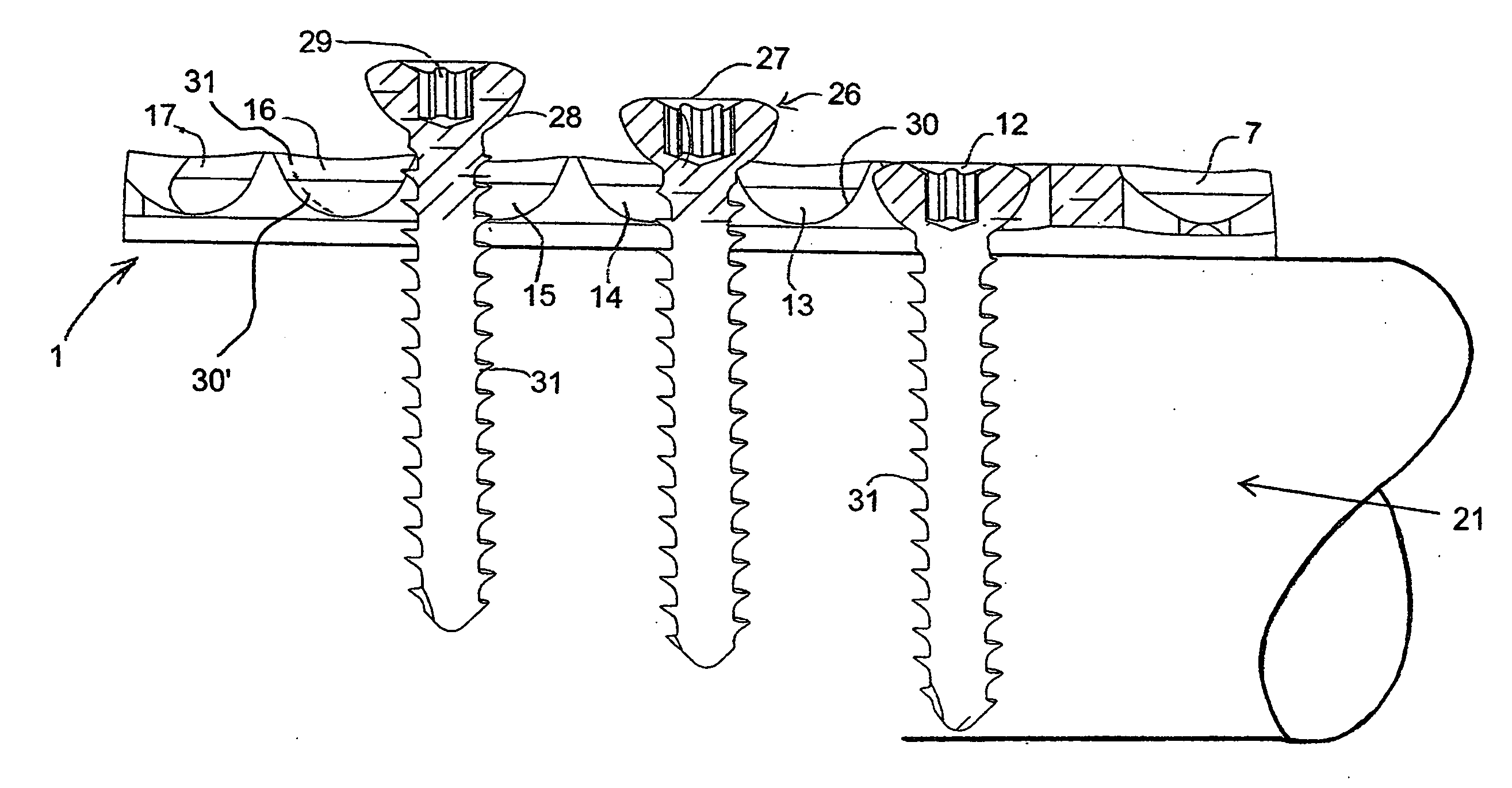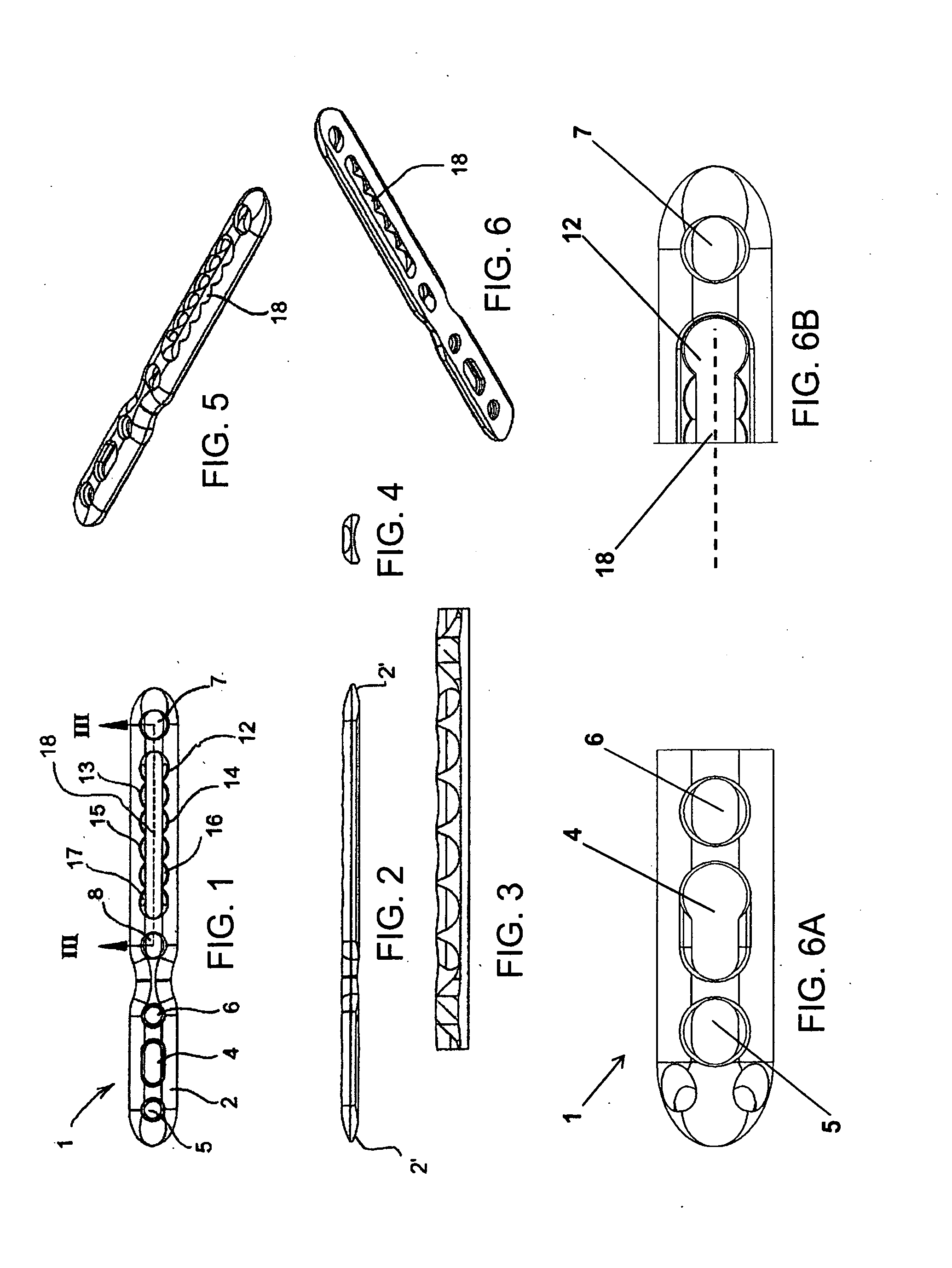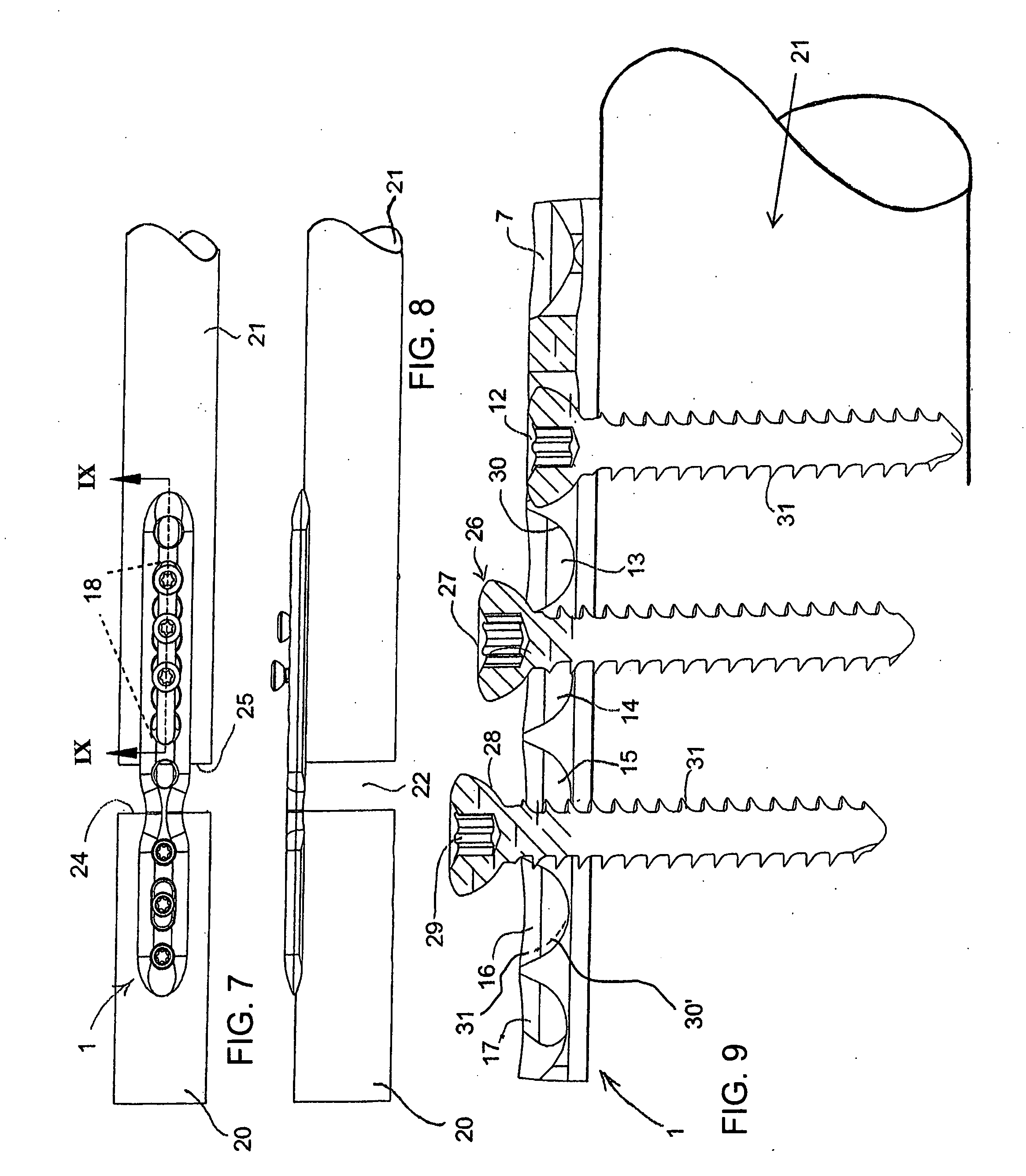[0011]It is accordingly an object of the invention to provide an osteotomy system, plate, method,
drill guide and saw guide, which overcome the hereinafore-mentioned disadvantages of the heretofore-known devices and methods of this general type and which eliminate the need for additional devices, simplifying and speeding the surgical procedure and therefore reducing
patient risk, as well as decreasing medical costs. More specifically, it is preferred that the device should not be cumbersome, should be almost entirely disposed within the body, should permit one plate to perform compression or distraction, should allow screws to be easily placed in a desired location and should allow for a variety of differently shaped planes resulting in different degrees of movement when contacted by screws.
[0022]In accordance with an additional embodiment of the invention, an anchoring screw may be tightened through a multi-angle screw hole in the plate body and through the second bone segment into the first bone segment after a desired amount of compression has been achieved. This is particularly useful in an oblique osteotomy where the screw placed through the multi-angle screw hole traverses both bone segments and aids in stabilization of the bone segments.
[0029]In accordance with another embodiment of an osteotomy system of the present invention, there is provided a saw guide for a step compression / distraction osteotomy plate, wherein the saw guide comprises an elongated body with a distal end portion, a proximal end portion, a center portion defining a first
cutting plane, an adjustable plate defining a second
cutting plane substantially parallel to the first
cutting plane and an adjustment screw that threadably engages a threaded hole in the adjustable plate, while freely rotating within non-threaded holes provided at each end of a center portion of the saw guide. In the instant embodiment, turning a knob in the adjustment screw displaces the adjustable plate within the center portion of the saw guide along the longitudinal axis of the elongated body of the saw guide in such a way that the separation between the first cutting plane and the second cutting plane can be adjusted by the surgeon to the desired length of bone to be
cut. If desired, a marking scale may be provided in the central body portion to indicate the separation between the first cutting plane and the second cutting plane.
[0031]In accordance with yet another embodiment of the invention, a saw guide is provided which includes a slotted
keyhole at each of the distal end portion and the proximal end portion of the saw guide body. As used herein, the term “slotted
keyhole” denotes an elongated hole or slot, wherein the opening at a first end is dimensioned to be larger than the opening at the second, opposite end, such that the head of a screw may freely pass through the first end opening, but not through the second end opening. The hole or slot is dimensioned to permit the screw's shaft to move freely from one end of the slot to the opposite end.
[0033]The osteotomy system of one particular embodiment of the present invention utilizes a combination step compression / distraction osteotomy plate including several advancement holes that may partially merge onto each other, in series, along a longitudinal slot on the plate. An osteotomy, creating two bone segments, may be performed by the surgeon free handed or, alternatively, with the aid of a saw guide. Tap holes for the advancement
bone screws are drilled eccentrically using a
drill guide or the saw guide. After fixing one end of the plate to a first bone segment an incremental advancement is obtained as the advancement screws are tightened and loosened sequentially into a second bone segment. In this manner, it is possible to advance the plate on the bone a
large distance, compressing or distracting the bone segments. One of these advancement screws can remain as an anchoring screw after the bone translation is finished. The present system and method of allowing compression and / or distraction of an osteotomy facilitates the use of a smaller incision and reduces the number of procedural steps, time, and instruments that the procedure requires.
 Login to View More
Login to View More  Login to View More
Login to View More 


